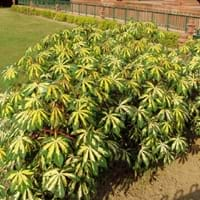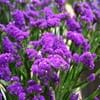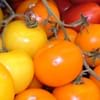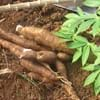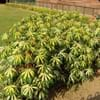Life Span
Annual
Perennial
Type
Tender Perennial
Tender Perennial
Origin
Mediterranean
South America, Brazil
Types
not available
Not Available
Habitat
All sorts of environments
Canyons, gardens, Grassland, Rainforest, Shaded sites
USDA Hardiness Zone
8-9
8-13
AHS Heat Zone
9-3
Not Available
Sunset Zone
A1, A2, A3, H1, H2, 1a, 1b, 2a, 2b, 3a, 3b, 4, 5, 6, 7, 8, 9, 10, 11, 12, 13, 14, 15, 16, 17, 18, 19, 20, 21, 22, 23, 24
H2, 19, 20, 21, 22, 23, 24
Habit
Clump-Forming
Upright/Erect
Flower Color
White, Yellow, Red, Purple, Orange, Pink, Magenta, Peach, Blue Violet
White, Red
Flower Color Modifier
Bicolor
Bicolor
Fruit Color
Not Available
Brown
Leaf Color in Spring
Green
Green, Light Yellow, Ivory
Leaf Color in Summer
Green
Dark Green, Light Yellow, Ivory
Leaf Color in Fall
Green
Dark Green, Light Yellow, Ivory
Leaf Color in Winter
Light Green
Light Green
Leaf Shape
Tongue shaped
Palmate
Plant Season
Summer, Fall
Spring, Summer, Fall, Winter
Sunlight
Full Sun, Partial Sun
Full Sun, Partial Sun
Type of Soil
Loam, Sand
Loam, Sand
The pH of Soil
Neutral
Acidic, Neutral
Soil Drainage
Average
Average
Bloom Time
Summer, Late Summer, Early Fall, Fall
Late Spring, Summer, Fall
Tolerances
Drought
Drought
Where to Plant?
Ground, Pot
Ground
How to Plant?
root cutting
Stem Planting
Plant Maintenance
Medium
Medium
Watering Requirements
Keep the Soil well drained
Keep the ground moist but not water-logged, Prefer drip-irrigation instead of Over-head watering, Reduce watering in winter, Requires watering in the growing season
In Summer
Lots of watering
Lots of watering
In Spring
Moderate
Moderate
In Winter
Average Water
Average Water
Soil pH
Neutral
Acidic, Neutral
Soil Type
Loam, Sand
Loam, Sand
Soil Drainage Capacity
Average
Average
Sun Exposure
Full Sun, Partial Sun
Full Sun, Partial Sun
Pruning
Prune in early spring, Remove damaged leaves, Remove dead branches, Remove dead leaves
Prune if you want to improve plant shape, Remove damaged leaves, Remove dead leaves, Remove deadheads, Shape and thin as needed
Fertilizers
All-Purpose Liquid Fertilizer
All-Purpose Liquid Fertilizer, Fertilize before watering, fertilize every 2-3 weeks while growing
Pests and Diseases
Crown rot, Fungal leaf spots, Gray mold
Mites, Red blotch, Scale, Thripes, Whiteflies
Plant Tolerance
Deer resistant, Drought
Drought
Flowers
Showy
Insignificant
Flower Petal Number
Single
Single
Foliage Texture
Medium
Coarse
Foliage Sheen
Matte
Glossy
Attracts
Beetles, Bumblebees, Butterflies, Hummingbirds
Birds
Allergy
Unknown
Not Available
Aesthetic Uses
Showy Purposes
Not Used For Aesthetic Purpose
Beauty Benefits
Not Available
Not Available
Environmental Uses
Air purification
Air purification
Medicinal Uses
Not Available
Cancer
Part of Plant Used
Flowers
Whole plant
Other Uses
Used as Ornamental plant
Animal Feed, Culinary use, Used as Biofuel, Used in making beverages
Used As Indoor Plant
Yes
No
Used As Outdoor Plant
Yes
Yes
Garden Design
Bedding Plant, Cutflower, Dried Flower/Everlasting, Mixed Border
Feature Plant, Herb / Vegetable, Mixed Border, Tropical
Botanical Name
LIMONIUM sinuatum
MANIHOT esculenta 'Variegata'
Common Name
Statice, Wavyleaf Sea Lavender
Variegated Cassava, Variegated Tapioca
In Hindi
Statice
Variegated Cassava
In German
Statice
Verändertes Cassava
In French
Statice
panaché manioc
In Spanish
estátice
abigarrado Yuca
In Greek
στατικές
Κυμαίνεται Cassava
In Portuguese
Statice
variegated de mandioca
In Polish
Statice
Kolorowy Maniok
In Latin
Statice
variegated Cassava
Phylum
Magnoliophyta
Not Available
Class
Magnoliopsida
Not Available
Order
Plumbaginales
Malpighiales
Family
Plumbaginaceae
Euphorbiaceae
Clade
Angiosperms, Core eudicots, Eudicots
Angiosperms, Eudicots, Rosids
Tribe
Not Available
Manihoteae
Subfamily
Not Available
Crotonoideae
Number of Species
Not Available
Importance of Statice and Variegated Cassava
Want to have the most appropriate plant for your garden? You might want to know the importance of Statice and Variegated Cassava. Basically, these two plants vary in many aspects. Compare Statice and Variegated Cassava as they differ in many characteristics such as their life, care, benefits, facts, etc. Every gardener must at least have the slightest clue about the plants he wants to plant in his garden. Compare their benefits, which differ in many ways like facts and uses. The medicinal use of Statice is Not Available whereas of Variegated Cassava is Cancer. Statice has beauty benefits as follows: Not Available while Variegated Cassava has beauty benefits as follows: Not Available.
Compare Facts of Statice vs Variegated Cassava
How to choose the best garden plant for your garden depending upon its facts? Here garden plant comparison will help you to solve this query. Compare the facts of Statice vs Variegated Cassava and know which one to choose. As garden plants have benefits and other uses, allergy is also a major drawback of plants for some people. Allergic reactions of Statice are Unknown whereas of Variegated Cassava have Not Available respectively. Having a fruit bearing plant in your garden can be a plus point of your garden. Statice has no showy fruits and Variegated Cassava has no showy fruits. Also Statice is not flowering and Variegated Cassava is not flowering . You can compare Statice and Variegated Cassava facts and facts of other plants too.

